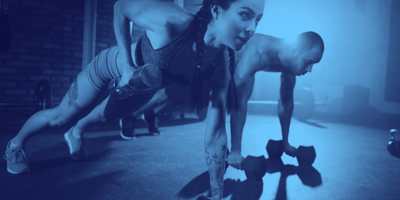Athletes of all levels strive to improve their performance while avoiding injuries that can set...
What to Do Following an Injury
School is back in full swing, routines are resuming after summer break, and sports are back in season. Most of us have likely taken some well deserved time off and rest over the summer, which is great and necessary. However, this means as we resume activity, we need to be systematic in our return to sport to prevent injury, if training didn't remain at the same intensity over the summer. Unfortunately, injuries occur wether it be preventable or traumatic and it is important to know what action to take. How an injury is managed immediately following onset is crucial to optimize tissue healing and recovery outcomes. Everyone is very familiar with the "RICE" principle following an injury, but what we have learned is that approach does not adequately address the tissues needs to recovery optimally! The new research has coined the term "Peace & Love" which is a better more thorough way to optimize soft tissue injury management in all phases of healing.
PEACE
Immediately after an injury occurs, follow the PEACE principle:
P = Protect
- For the first 1-3 days, avoid activities and movements that increase pain. Minimize your rest and remain mobile. Let pain serve as a guide as to what you can tolerate during in the first 3 days.
E = Elevate
- Elevate the injured limb higher than the heart as often as possible.
A = AVOID anti-inflammatories
- Do not take an NSAID at this time! The body is going through the first phase of healing, the inflammatory phase, which NEEDS to take place. Using medication to block the necessary inflammatory process can impair the healing process and negatively affect long-term tissue healing. Avoid icing. Ice can disrupt inflammation, slow blood flow and limit the vascularization in the area.
C = Compress
- Compressions garments, socks, or bandages can be applied, but must still allow for full movement of the joint
E = Educate
- It is important to understand the approach of active recovery versus rest and passive recovery. Avoid excessive passive treatment and medical investigation such as imaging, and let the body recover naturally, as it was made to do. You know your body best. If something doesn't seem right, then consult with your provider on what steps to take next. This time is also crucial to talk about pain management, set realistic expectations about recovery and tissue healing time frames.
LOVE
As the area is starting to heal and the first 7-10 days have passed, follow the LOVE principle:
L = Load
- As you return to normal activity as symptoms allow, it is important to start addressing the injury with an active approach with movement and exercise. It is important to listen to your body and move within ranges that cause very minimal pain.
O = Optimization
- Our brains and thoughts are extremely powerful and play a huge role in recovery. The more optimistic, confident, and positive you are about your recovery the better your outcomes. :)
V = Vascularization
- Despite where your injury happens, the most important muscle to train in the body is our heart. Cardiovascular training will allow for a pump mechanism throughout the entire body which will increase blood flow system wide. The more blood you can pump to an injured area, the better the tissue can heal. And who doesn't feel great after a quick cardio pump!
E= Exercise
- Use pain as a guide as you progress with exercises. Gradually increase the load. Make sure you address not only mobility and strength, but plyometrics, balance, agility, coordination, and power.
Where to go from here?
You can now better appreciate that 4-6 weeks of passive rest following an injury will not yield positive results as you return to sport/activity. Rest and other passive modalities such as ultrasound, TENS, and massage will help modulate pain, but will not change the capacity of the tissue, which is setting you up for re-injury. Tissue becomes stiff and weak after a trauma. This is why the role of Physical Therapy is important and necessary. Rehab is training in the presence of injury. The goal is to restore normal joint mobility tissue strength/capacity better than it was prior to injury, so the same injury doesn't occur. You hear far too often of athletes sustaining multiple ACL tears, or multiple ankle sprains which is a result of poor management following an injury.
If you find yourself injured, or have recently experienced injury, don't wait and see if it will get better. Help yourself now while things are fresh and keep yourself from dealing with nagging pain or constant re-injury when it can be solved today! Contact Elevation Athletics to talk with one of our Physical Therapists for personalized care, tailored to you and your goals, and get back to the sport or activity you love feeling the strongest and most confident you ever have!
"Hurt less! Get hurt less!"
References:
-
Peace and Love Principle. (2024, February 29). Physiopedia, . Retrieved 16:57, August 13, 2024 from https://www.physio-pedia.com/index.php?title=Peace_and_Love_Principle&oldid=350787.
- Dubois B, Esculier JF. Soft-tissue injuries simply need PEACE and LOVE. Br J Sports Med. 2020 Jan;54(2):72-73. doi: 10.1136/bjsports-2019-101253. Epub 2019 Aug 3. PMID: 31377722
%20(1).png?width=500&height=128&name=Elevation%20Atletics%20(3)%20(1).png)


